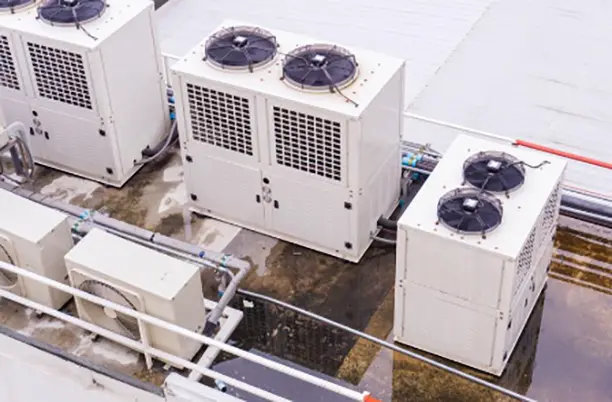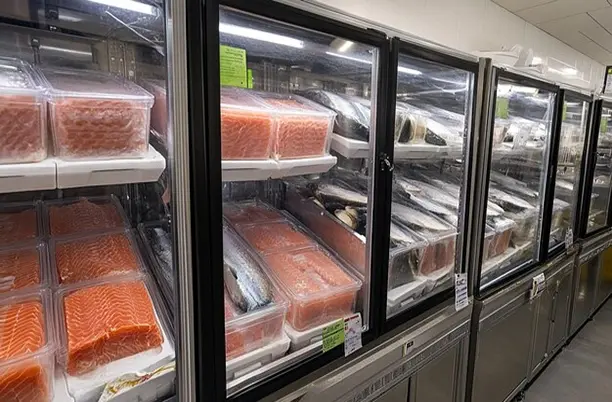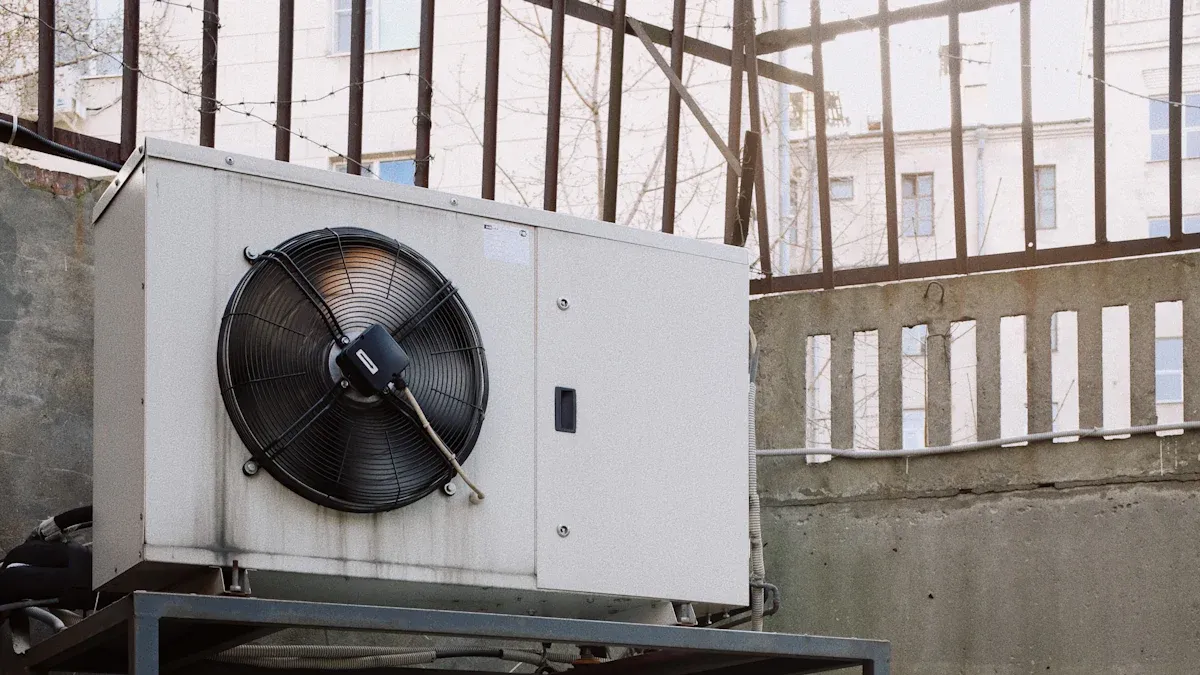2025 Cold Chain Trends: Innovative Heat Exchanger Designs for Logistics

In 2025, innovative heat exchanger designs are revolutionizing cold chain logistics. These advancements enhance operational efficiency, reduce costs, and align with global sustainability goals. For instance, industries now prioritize energy-efficient solutions, leveraging advanced materials like corrosion-resistant alloys to optimize performance. Enhanced designs, such as the B285 frameless brazed plate heat exchanger, demonstrate significant energy savings while supporting natural refrigerants.
Senjun, a leader in this transformation, specializes in cutting-edge solutions like Copper Fin Heat Exchangers. Their expertise spans applications in refrigerators, medical ultra-low temperature units, and more, ensuring precise temperature control and reliability. By driving innovation, Senjun plays a pivotal role in shaping the future of cold chain systems.
Key Takeaways
- New heat exchanger designs help cold chains save energy and money.
- Copper fin heat exchangers transfer heat well, keeping temperatures steady.
- Adding IoT tech lets heat exchangers track data and work better.
- New materials and 3D printing make heat exchangers stronger and faster.
- Eco-friendly designs cut waste and use energy more efficiently.
Why Heat Exchanger Innovation Matters
The Role of Heat Exchangers in Cold Chain Systems
Heat exchangers are the backbone of cold chain logistics. They ensure precise temperature regulation, which is critical for preserving the quality of perishable goods. I’ve observed that industries like food & beverage and pharmaceuticals rely heavily on these systems to maintain product integrity. For instance, vaccines and biologics require consistent ultra-low temperatures to remain effective. Without efficient heat exchangers, such precision would be impossible.
The growing demand for compact and energy-efficient refrigeration solutions has further highlighted their importance. Microchannel heat exchangers, for example, have gained popularity due to their ability to save energy while maintaining safety standards. Additionally, the rise of e-commerce grocery delivery services has created a need for cost-effective refrigeration systems that can handle high volumes. These trends underscore why innovation in heat exchanger technology is vital for modern logistics.
Challenges in Traditional Heat Exchanger Designs
Traditional heat exchangers often fall short in meeting the demands of today’s cold chain systems. Their structural limitations restrict maximum heat transfer rates, which can compromise efficiency. I’ve noticed that the typical rectangular design, while easy to manufacture, struggles to optimize heat exchange in compact spaces. This becomes a significant issue in high-temperature or high-pressure environments.
Traditional designs also lack the adaptability required for modern applications. For example, they often fail to integrate seamlessly with advanced systems like IoT-enabled monitoring tools. This limits their ability to provide real-time data on performance and energy consumption. To address these challenges, manufacturers are now exploring innovative materials and designs, such as Copper Fin Heat Exchangers, which offer enhanced durability and efficiency.
Key Trends in Heat Exchanger Designs for 2025

Advanced Materials and Manufacturing Techniques
In 2025, advanced materials and manufacturing techniques are redefining heat exchanger designs. I’ve observed that innovations like 3D printing and computational fluid dynamics (CFD) are enabling manufacturers to create more efficient and durable systems. For instance, 3D printing allows for the construction of heat exchangers as a single block, eliminating weak points caused by welded joints. This is critical for maintaining strength under high-pressure and high-temperature conditions. Additionally, the integration of bone-like lattice structures within the heat exchanger core has significantly increased the surface area for heat transfer, enhancing efficiency.
The technical benefits are remarkable. Pressure drops on the cold side have decreased by 38%, while the hot side has seen a 20% reduction. Moreover, the average heat transfer coefficient has improved by 34%. These advancements not only boost performance but also extend the lifespan of systems like Copper Fin Heat Exchangers, making them a preferred choice for modern logistics.
Energy Efficiency and Sustainability
Energy efficiency and sustainability are at the forefront of heat exchanger innovations. Modern systems are designed to optimize energy use while minimizing environmental impact. For example, data centers now capture and reuse heat generated by servers, redirecting it for district heating or industrial processes. This approach reduces emissions and offsets the use of carbon-intensive heating sources.
Metrics like Power Usage Effectiveness (PUE) and Energy Reuse Factor (ERF) highlight these improvements. A lower PUE signifies better energy efficiency, while a higher ERF indicates effective heat repurposing. Additionally, advanced cooling systems, economizers, and efficient chillers are reducing energy costs and enhancing operational sustainability. These developments align perfectly with the growing demand for eco-friendly solutions in cold chain logistics.
Integration with IoT and Smart Systems
The integration of IoT and smart systems is transforming how heat exchangers operate. I’ve seen how IoT-enabled monitoring tools provide real-time data on performance, energy consumption, and potential issues. For example, Cisco’s IoT Control Center has demonstrated a 90% recovery of waste heat, proving the effectiveness of smart systems in optimizing energy use.
IoT also enables early detection of operational problems, allowing for proactive maintenance. This reduces downtime and ensures regulatory compliance. By connecting heat exchangers to a global network, manufacturers can monitor and manage systems remotely, enhancing efficiency and reliability. Copper Fin Heat Exchangers, when integrated with IoT, offer unparalleled performance, making them indispensable in modern logistics.
The Rise of Copper Fin Heat Exchangers
Copper fin heat exchangers have emerged as a game-changer in cold chain logistics. I’ve noticed their growing popularity stems from their exceptional thermal conductivity, durability, and adaptability. Copper, as a material, offers superior heat transfer capabilities compared to alternatives like aluminum. This makes it ideal for applications requiring precise temperature control, such as medical ultra-low temperature refrigerators and display cabinets.
One of the standout features of copper fin heat exchangers is their ability to maintain efficiency under extreme conditions. For instance, they perform exceptionally well in high-pressure environments, where traditional designs often falter. Their compact size also makes them suitable for modern logistics systems, where space optimization is critical. I’ve seen how industries are leveraging these exchangers to enhance operational efficiency without compromising on performance.
Note: Copper fin heat exchangers not only improve energy efficiency but also contribute to sustainability goals. Their long lifespan reduces the need for frequent replacements, minimizing waste and resource consumption.
Another key advantage lies in their compatibility with IoT-enabled systems. When integrated with smart monitoring tools, these exchangers provide real-time data on performance and energy usage. This allows for predictive maintenance, reducing downtime and ensuring consistent operation. I believe this integration is pivotal for meeting the demands of today’s fast-paced logistics networks.
Senjun has been at the forefront of this innovation. Their expertise in developing copper fin heat exchangers has set a benchmark in the industry. By combining advanced materials with cutting-edge manufacturing techniques, they deliver solutions that cater to diverse applications, from ice makers to dehumidifiers.
Impact on Logistics Operations

Improved Temperature Control and Product Quality
Innovative heat exchanger designs are transforming how logistics operations maintain temperature-sensitive products. I’ve seen how industries like food and pharmaceuticals rely on these advancements to ensure product quality. For example, microchannel heat exchangers, known for their compactness and energy efficiency, are now essential in cold chain logistics. These systems maintain precise temperatures during transport and storage, which is critical for preserving the integrity of perishable goods.
The importance of precision in manufacturing cannot be overstated. Inconsistent temperatures can lead to defects, spoilage, and waste, especially in sectors like healthcare and food. The following table highlights key aspects of quality control and their impact on product quality:
| Aspect | Importance | Impact on Product Quality |
|---|---|---|
| Precision in Manufacturing | Critical for achieving desired material properties | Inconsistent temperatures can lead to defects and waste. |
| Safety and Compliance | Essential for preventing spoilage and ensuring consumer safety | Maintains product integrity in food and healthcare sectors. |
| Energy Efficiency | Optimizes energy use and reduces operational costs | Consistent temperatures enhance equipment lifespan and reduce maintenance. |
These innovations not only improve product quality but also ensure compliance with safety standards. By leveraging advanced heat exchangers, logistics operations can meet the growing demand for reliable temperature control.
Cost Savings and Operational Efficiency
Advanced heat exchanger designs also deliver significant cost savings and operational efficiency. I’ve observed how systems like detachable plate heat exchangers and microchannel heat exchangers reduce energy consumption and maintenance costs. Their high heat transfer efficiency and lower refrigerant use make them ideal for applications in HVAC, food processing, and automotive industries.
The table below illustrates the benefits of these heat exchanger types:
| Heat Exchanger Type | Key Benefits | Applications |
|---|---|---|
| Detachable Plate Heat Exchanger | High heat transfer efficiency, easy maintenance, energy savings | HVAC, power generation, food processing, etc. |
| Microchannel Heat Exchanger | Superior heat transfer, lower refrigerant use, improved system reliability | HVAC, automotive applications |
These designs optimize energy use, which directly reduces operational costs. For instance, the compact nature of microchannel heat exchangers allows for better space utilization in logistics systems. This is particularly valuable in high-demand sectors like e-commerce grocery delivery, where efficiency is paramount. By adopting these innovations, companies can achieve both financial and operational benefits, ensuring long-term sustainability.
Future Outlook for Heat Exchanger Innovations
AI-Driven Designs
Artificial intelligence (AI) is reshaping the future of heat exchanger designs. I’ve observed how AI-driven systems are optimizing workflows and enhancing operational efficiency across industries. By leveraging machine learning, manufacturers can now create generative designs that maximize heat transfer while minimizing material usage. This approach not only improves performance but also reduces production costs.
AI’s role extends beyond design. It enables real-time decision-making for operational adjustments, ensuring systems adapt to changing conditions. For instance, deep learning algorithms analyze performance data to predict maintenance needs, reducing downtime and extending equipment lifespan. The following table highlights key aspects of AI-driven heat exchanger innovations:
| Aspect | Description |
|---|---|
| Focus | Optimization and deep learning in heat exchanger design workflows |
| Techniques | Use of machine learning for generative design and operational adjustments |
| Applications | Broad spectrum across various industries, enhancing durability and efficiency |
| AI Role | Autonomous decision-making for real-time design and operation management |
These advancements are particularly valuable in industries requiring precise thermal management, such as pharmaceuticals and data centers. I believe AI will continue to drive innovation, making heat exchangers smarter and more reliable.
Integration with Renewable Energy Sources
The integration of heat exchangers with renewable energy sources is a game-changer for sustainability. I’ve seen how these systems recover and repurpose excess heat, significantly reducing energy waste. For example, the Lepido heat exchanger recovers up to 90% of energy lost in commercial kitchens, saving as much as 85,000 kilowatt-hours annually for a single restaurant. This demonstrates the immense potential of coupling heat exchangers with renewable energy systems.
Globally, the demand for sustainable solutions is driving market growth. Key trends include:
- The rising adoption of heat pumps in Europe, supported by energy-efficient building renovations.
- A projected global heat exchanger market growth from USD 23.0 billion in 2024 to USD 32.3 billion by 2029, driven by industrialization and energy efficiency regulations.
- Significant markets like China, the U.S., and India increasingly adopting renewable energy models, further boosting demand.
These trends highlight the critical role of heat exchangers in achieving energy efficiency and sustainability goals. By integrating with renewable energy sources, they not only reduce carbon footprints but also enhance operational efficiency. I foresee a future where heat exchangers become indispensable in renewable energy systems, powering industries while preserving the planet.
The advancements in heat exchanger designs are reshaping cold chain logistics. I’ve seen how trends like energy efficiency, IoT integration, and the rise of copper fin heat exchangers are driving operational improvements. These innovations enhance temperature control, reduce costs, and support sustainability goals.
| Opportunities | Challenges |
|---|---|
| The expansion of cold chain logistics in food & pharmaceutical industries drives demand for efficient, compact, and energy-saving microchannel heat exchangers. | The competitive market demands constant innovation to address price pressures and emerging technologies. |
Staying informed about these developments is essential for maintaining a competitive edge. Senjun’s expertise in copper aluminum fin heat exchangers positions them as a leader in this evolving landscape, delivering reliable and efficient solutions for diverse applications.
FAQ
What are the key benefits of copper fin heat exchangers?
Copper fin heat exchangers offer superior thermal conductivity, durability, and adaptability. They ensure precise temperature control, even in extreme conditions. Their compact design saves space, making them ideal for modern logistics systems. Additionally, they integrate seamlessly with IoT systems, enabling real-time monitoring and predictive maintenance.
How do IoT-enabled heat exchangers improve logistics operations?
IoT-enabled heat exchangers provide real-time performance data, allowing for proactive maintenance and operational adjustments. This minimizes downtime and enhances system reliability. By connecting to a global network, these systems optimize energy use and ensure consistent temperature control, which is critical for cold chain logistics.
Why is energy efficiency important in heat exchanger design?
Energy efficiency reduces operational costs and environmental impact. Advanced designs, like microchannel heat exchangers, optimize energy use while maintaining performance. This aligns with sustainability goals and supports industries like food and pharmaceuticals, where precise temperature control is essential.
How does Senjun contribute to heat exchanger innovation?
Senjun leads the industry with advanced solutions like copper aluminum fin heat exchangers. Their expertise spans diverse applications, including medical ultra-low temperature refrigerators and dehumidifiers. By combining cutting-edge materials with innovative designs, Senjun delivers reliable, efficient, and sustainable solutions for modern logistics.
What role does AI play in heat exchanger advancements?
AI optimizes heat exchanger designs by analyzing performance data and predicting maintenance needs. It enables generative designs that maximize heat transfer while minimizing material use. AI-driven systems adapt to changing conditions, ensuring efficiency and reliability in industries requiring precise thermal management, such as pharmaceuticals and data centers.


















